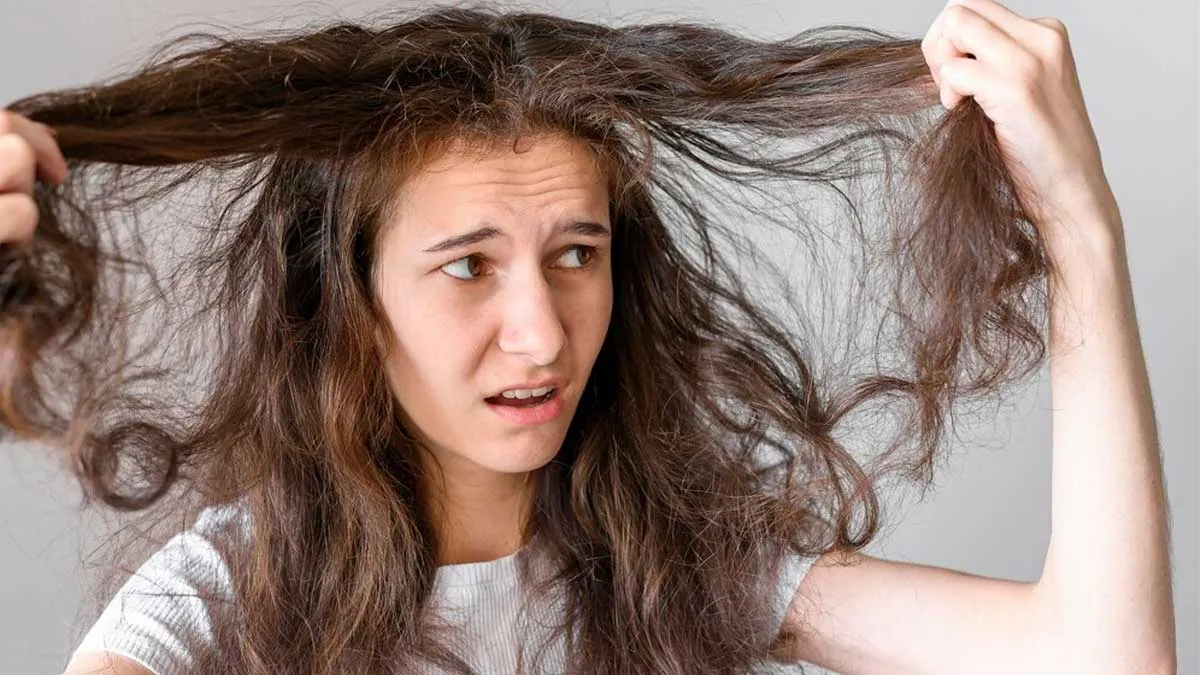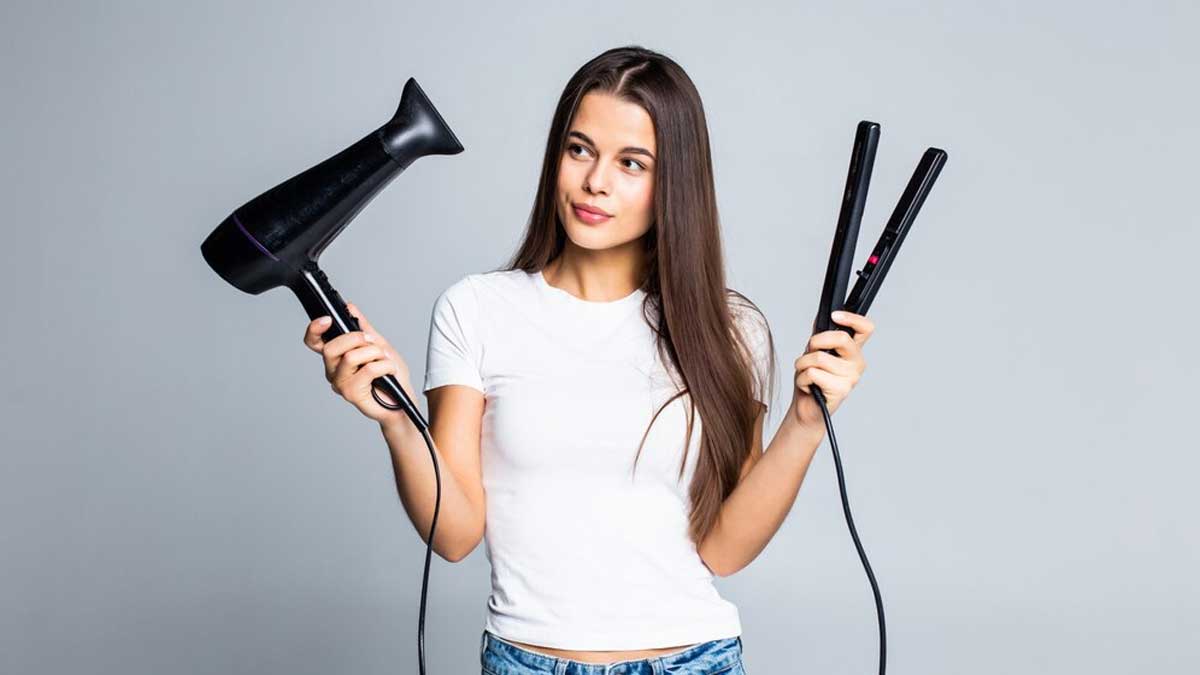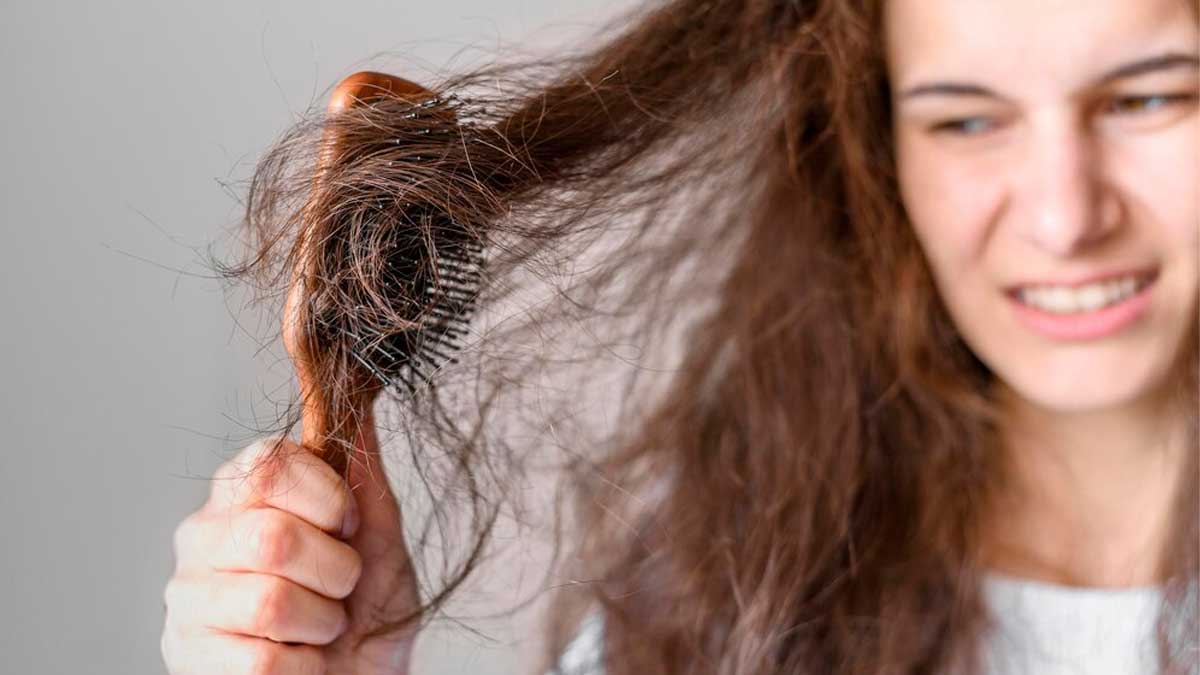
We often talk about wanting "healthy" hair, but what does it mean when hair is considered "dead"? It might sound alarming, but the truth is, the hair strands we see and style are, in fact, no longer living. To understand this better and learn how to revitalise lackluster locks, we spoke with Dr Sanjeev Gulati, from the Department of Dermatology at Sharda Hospital in Noida.
Table of Content:-
"The hair shaft itself, the part that extends beyond the scalp, is composed of keratinocytes that have lost their nuclei and are essentially dead cells. The living part of the hair is the follicle beneath the scalp, where new hair growth originates," explains Dr Gulati.
So, if all the hair we see is technically "dead," why does some hair look vibrant and healthy while others appear dull, brittle, and lifeless? The answer lies in the condition of the hair shaft.
Understanding "Dead" Hair
When people refer to "dead" hair, they're usually describing hair that exhibits signs of significant damage and lacks vitality. This can manifest in several ways:
Extreme Dryness and Brittleness: The hair feels rough, lacks moisture, and breaks easily.
Split Ends: The hair shaft splits, often due to damage to the outer protective layer (cuticle).
Lack of Shine and Luster: The hair appears dull and doesn't reflect light well.
Tangling and Knotting: The damaged cuticle makes it difficult for hair strands to lie smoothly against each other.
Increased Porosity: The hair's outer layer is compromised, leading to excessive absorption of water and products, often resulting in frizz and weakness.
Also Read: Try These Expert-Approved DIY Beetroot Masks To Get Naturally Rosy Skin At Home!

What Causes This "Dead" Appearance?
According to Dr Gulati, several factors can contribute to the deterioration of the hair shaft:
Heat Styling: Frequent use of flat irons, curling irons, and blow dryers at high temperatures can strip the hair of its natural moisture and damage the protein structure.
Chemical Treatments: Coloring, perming, and relaxing involve harsh chemicals that can weaken the hair shaft, making it porous and prone to breakage.
Over-Washing: While hygiene is important, excessive washing can remove the natural oils that protect and lubricate the hair.
Harsh Products: Shampoos and styling products containing sulfates and alcohol can dry out the hair.
Environmental Factors: Sun exposure, pollution, and hard water can also contribute to hair damage.
Poor Diet and Hydration: While the living part of the hair (follicle) is primarily affected by nutrition, a lack of essential nutrients can indirectly impact the overall health and resilience of the hair shaft.
Aggressive Styling: Rough brushing, tight hairstyles, and excessive manipulation can cause physical damage and breakage.

Expert Tips to Revive "Dead" Hair
While you can't bring the dead hair shaft back to life in a literal sense, you can significantly improve its condition and appearance. Dr Gulati offers these expert recommendations:
1. Minimise Heat Styling
"Reduce the frequency of heat styling tools and always use a heat protectant spray before applying heat," advises Dr Gulati. Opt for lower heat settings and allow your hair to air dry whenever possible.
2. Choose Gentle Hair Care Products
Select sulfate-free shampoos and moisturising conditioners. Look for ingredients like natural oils (argan, coconut, olive), shea butter, and keratin.
3. Deep Condition Regularly
"Weekly deep conditioning treatments can help replenish moisture and repair damage," recommends Dr Gulati. Choose a deep conditioner suited to your hair type and leave it on for the recommended time, often with heat for better penetration.
4. Use Hair Oils and Serums
Apply a lightweight hair oil or serum to the ends of your hair to seal in moisture, reduce frizz, and add shine. Argan oil, jojoba oil, and silicone-based serums can be beneficial.
5. Handle Hair Gently
Avoid harsh brushing, especially when the hair is wet. Use a wide-tooth comb or a detangling brush. Opt for looser hairstyles to prevent tension and breakage.
6. Protect Your Hair from Environmental Damage
Wear a hat or scarf when exposed to prolonged sunlight or harsh weather conditions. Consider using a water filter if you have hard water.
7. Trim Regularly
"Regular trims are essential to remove split ends and prevent them from traveling up the hair shaft, causing further damage," emphasises Dr Gulati. Aim for a trim every 6-8 weeks.
8. Consider Professional Treatments
If your hair is severely damaged, consider professional treatments like keratin treatments or deep conditioning masks at a salon.
9. Focus on Scalp Health
While the visible hair is dead, a healthy scalp is crucial for new, healthy growth. Gentle scalp massages can improve blood circulation, and using a scalp scrub can remove buildup.
10. Be Patient and Consistent
Repairing damaged hair takes time and consistent effort. Be patient with the process and stick to a healthy hair care routine.
Bottomline
While the hair shaft is technically composed of dead cells, the term "dead hair" signifies significant damage and lack of vitality. By understanding the causes of this damage and implementing expert-backed tips from Dr Gulati, you can effectively revive your locks, improve their appearance, and promote the growth of healthier, more resilient hair from the living follicles beneath your scalp. Remember, consistent care and gentle practices are key to achieving and maintaining healthy-looking hair.
Also watch this video
How we keep this article up to date:
We work with experts and keep a close eye on the latest in health and wellness. Whenever there is a new research or helpful information, we update our articles with accurate and useful advice.
Current Version
